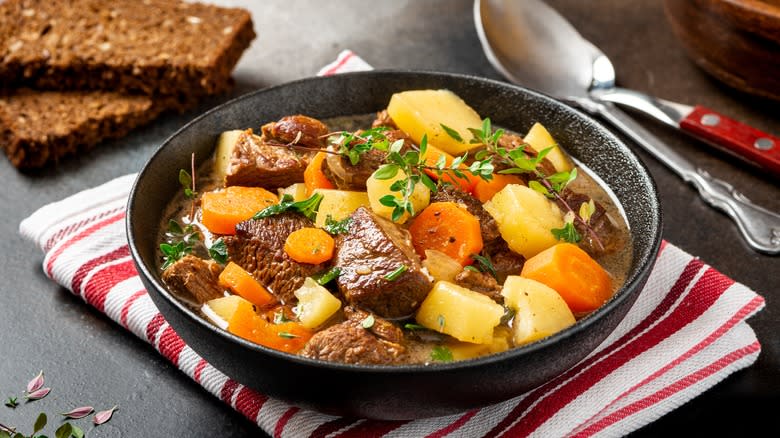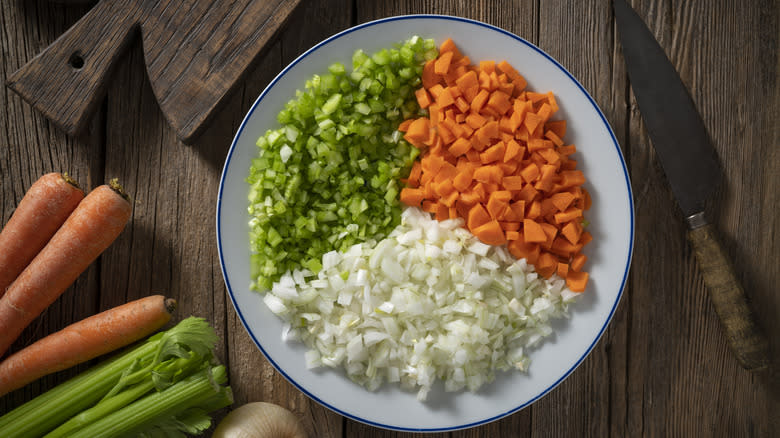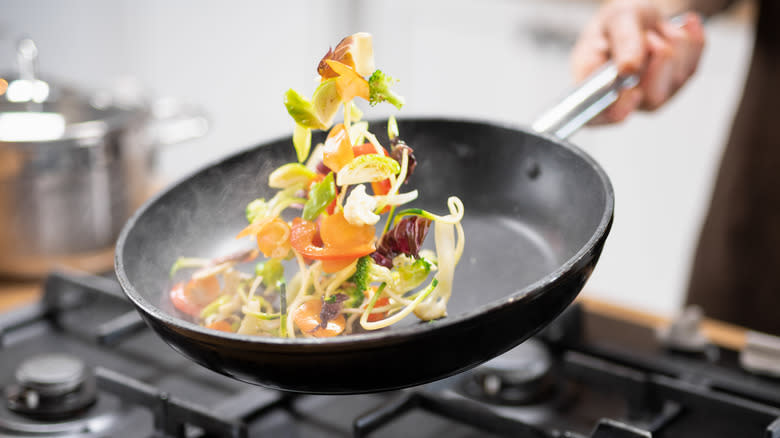It's Time To Start Sautéing Your Veggies Before Adding Them To Stew

We may receive a commission on purchases made from links.
Getting a hearty, homemade meal on the table on a busy weeknight can be tough. And if you're looking to make an easy beef stew, you wouldn't be alone in reading a typical recipe and thinking there's not enough time to both chop and sauté the vegetables. So instead, you take a shortcut, throwing the chopped veggies right into the pot uncooked with everything else, and hope for the best. The result is a lackluster stew -- so you judge the recipe as a dud.
But the problem isn't with the recipe. The skipped step -- sautéing vegetables and aromatics first -- is a crucial one for most dishes like sauces, soups, stews, and chilis. If you only cook your vegetables in stock instead of sautéing them first, your vegetables won't cook at a temperature above 212 degrees Fahrenheit, as the liquid cannot get hotter than the boiling point. This stops certain chemical reactions from happening to your vegetables -- reactions that help develop deeper or different flavor profiles in vegetables and aromatics like spices or pastes. Not sautéing your vegetables first will likely lead to an unbalanced stew that could have had much more flavor.
Read more: 11 Of The Best Cooking Tips From Bobby Flay
Sautéing Veggies Is A Crucial Step

Sautéing is when you cook food in a small amount of fat and at high heat. The high heat unlocks certain flavor compounds in chopped vegetables, releasing different aromas and profiles. One of the best examples is cooking garlic and onions. Raw, these alliums are potent, pungent, and can be overwhelming. Once chopped and browned in fat, new aromas and softer flavors are developed. Cooked onion becomes much more sweet, and garlic is much less harsh. It's these fat-soluble flavors that will round out a stew and make it richer, and more balanced.
Sautéing gives food that yummy brown layer -- this is due to the Maillard reaction -- which makes most foods taste better. To echo chef Anne Burrell, "Brown food tastes good." For beef stew, vegetables aren't the only ingredient we should be sautéing. We also sauté the meat first, to get some nice browning on the beef, and fond in the pan (the leftover crispy bits), which can then be deglazed and added to the stock for deeply developed flavors.
Tips For Sautéing Effectively

Sautéing is one of the most important basic methods to have in your cooking arsenal. To sauté effectively, make sure you cut your vegetables (or any ingredient) evenly. Vegetables that aren't cut into uniform size will cook unevenly -- some faster than others. This results in some being overcooked and some being undercooked. Make sure to use a fat with a high smoke point, since sautéing requires high heat (between 350 and 450 degrees Fahrenheit). Butter tastes good, but has a low smoke point and will burn. Many types of oils, like canola, sesame, or avocado, for example, have high smoke points and are ideal for sautéing. You want to hear the vegetables sizzle when dropped into the pan.
As long as those complex flavor profiles are released, your stew will taste its best. So when a recipe calls for sautéing anything, it's best not to skip this important step.
Read the original article on Daily Meal.

 Yahoo Finance
Yahoo Finance 